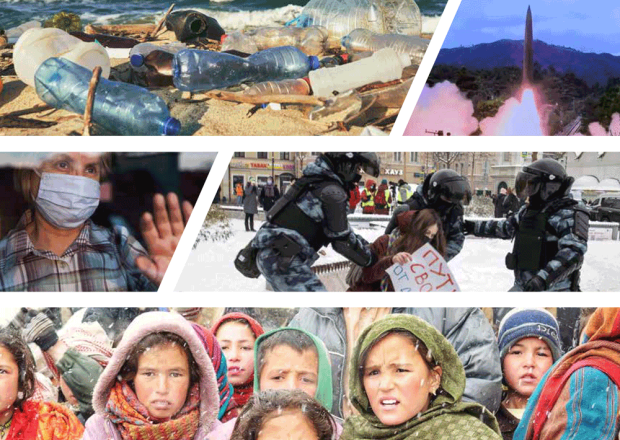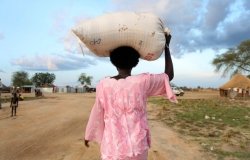
A blog of the Wilson Center
On the Horizon 2022 | Three Stubborn Things

Shutterstock.com
Now for the hard part: In order to keep pace with the requirements of transitioning to “green energy,” mining of critical minerals like lithium and cobalt will need to quadruple in less than 20 years.
The COP26 climate summit was an impressive gathering of world leaders around an issue of shared concern. Yet, in many ways, the agreement among nearly 200 countries papers over some of the significant challenges that lie ahead.
One of these is the near insatiable global demand for energy. Led by economic growth in low- and middle-income countries, the Energy Information Agency, or EIA, expects global energy demand to increase by nearly 50% in the next thirty years. While renewable energy output is expected to almost double during that time, it will still make up less than 30% of the world’s energy consumption by 2050. Underscoring this reality, the EIA expects coal consumption to increase in the United States by 18% this year—the first increase since 2014—and 2021 global coal consumption to surpass that of 2019.
A second challenge is the current shortfall in the mining and industrial capacity required to meet the demands of the green energy transition. When compared to its fossil fuel-based counterpart, each electric vehicle typically requires six times the inputs of minerals such as copper, nickel, or graphite. The production of these and other minerals collectively will need to increase by four times by 2040. Some of the minerals most important to electric vehicle technology are concentrated in regions suffering chronic instability: for example about 70% of the world’s cobalt is mined in the conflict-torn Democratic Republic of Congo. To make things even more complicated, the vast majority of the processing for some of these minerals is currently located in or controlled by mainland China.
The vulnerabilities suggested by these numbers are largely a product of U.S. policies and priorities. A recent Wilson Center analysis showed consistent underinvestment in minerals extraction in the U.S. due to political and regulatory challenges.
Moving in the wrong direction: every year since 2013 has seen a new record in the number of people displaced around the world.
In 2012, the world began to reverse its decade-and-a-half long trend of falling numbers in human displacement, and unfortunately, it has not looked back since. As 2021 came to a close, the United Nations reported that approximately 84 million people were forcibly displaced from their homes by conflict, insecurity, and climate change—more than double the number from just ten years ago.
No region has evaded this challenge. Civil war in Syria has displaced more than 60% of its pre-war population; economic collapse and deep political oppression have pushed more than five million Venezuelans abroad; and a record 32 million Africans are displaced by conflict and repression. Most of the world’s displaced stay within their own country (known as internally displaced persons or IDPs). Three quarters of refugees who leave their home countries are hosted in neighboring countries. For example, Turkey alone hosts nearly four million Syrian refugees and asylum seekers.
Not every displaced person is fleeing conflict or political oppression. An increasing number of people are escaping the fallout from climate extremes. The world is also witnessing unprecedented numbers of economic migrants. With these individuals added into the mix, in 2020, a full 3.6% of the world’s population was on the move—more than at any time in the last 50 years. More than any time in living memory, humanity is in motion.
Well that didn’t work: Attacks by the Islamic State have more than tripled in Afghanistan this year.
Many Americans are eager to turn the page on Afghanistan and the heartbreaking stories emerging from the hasty withdrawal of U.S, and Coalition forces. But averting our gaze does not change the harsh realities on the ground. In truth, a catastrophic mix of famine and human rights abuses continues to unfold there with lasting ramifications. More than half of the population now faces acute food insecurity, according to the World Food Program, and the International Monetary Fund expects the foreign aid dependent economy to shrink by as much as 30%. UN Women recently issued a “Gender Alert” on Afghanistan stating that in the wake of the U.S. withdrawal, “there have been immediate reversals on women’s rights and fundamental freedoms….”
The security situation has also continued to deteriorate. A convulsion of score settling and reprisals against former security services personnel has left dozens dead, driving former soldiers without income or hope into the arms of the Islamic State they once fought. According to the terrorism researcher Abdul Sayed, ISIS attacks have more than tripled this year over last, making good on a threat known as far back as the summer of 2021. Assuring the world that everything is under control, the Taliban have sent hundreds of fighters to battle the ISIS insurgency around Jalalabad, all the while fueling it with summary executions and disappearances. In November the UN special envoy stated that the Islamic State was now present in nearly every province of the country and had expanded its attacks five-fold from a year ago. The Pentagon has testified that ISIS may have the capacity to strike the United States within six months.
Wilson Center scholars, fellows, and experts provided instant analysis of the implications of the withdrawal from Afghanistan every step of the way in a series called: “Hindsight Up Front.”

ON THE HORIZON | WHAT TO WATCH IN 2022
Explore the full publication and learn what Wilson experts are watching in 2022.
LEARN MOREAbout the Author














